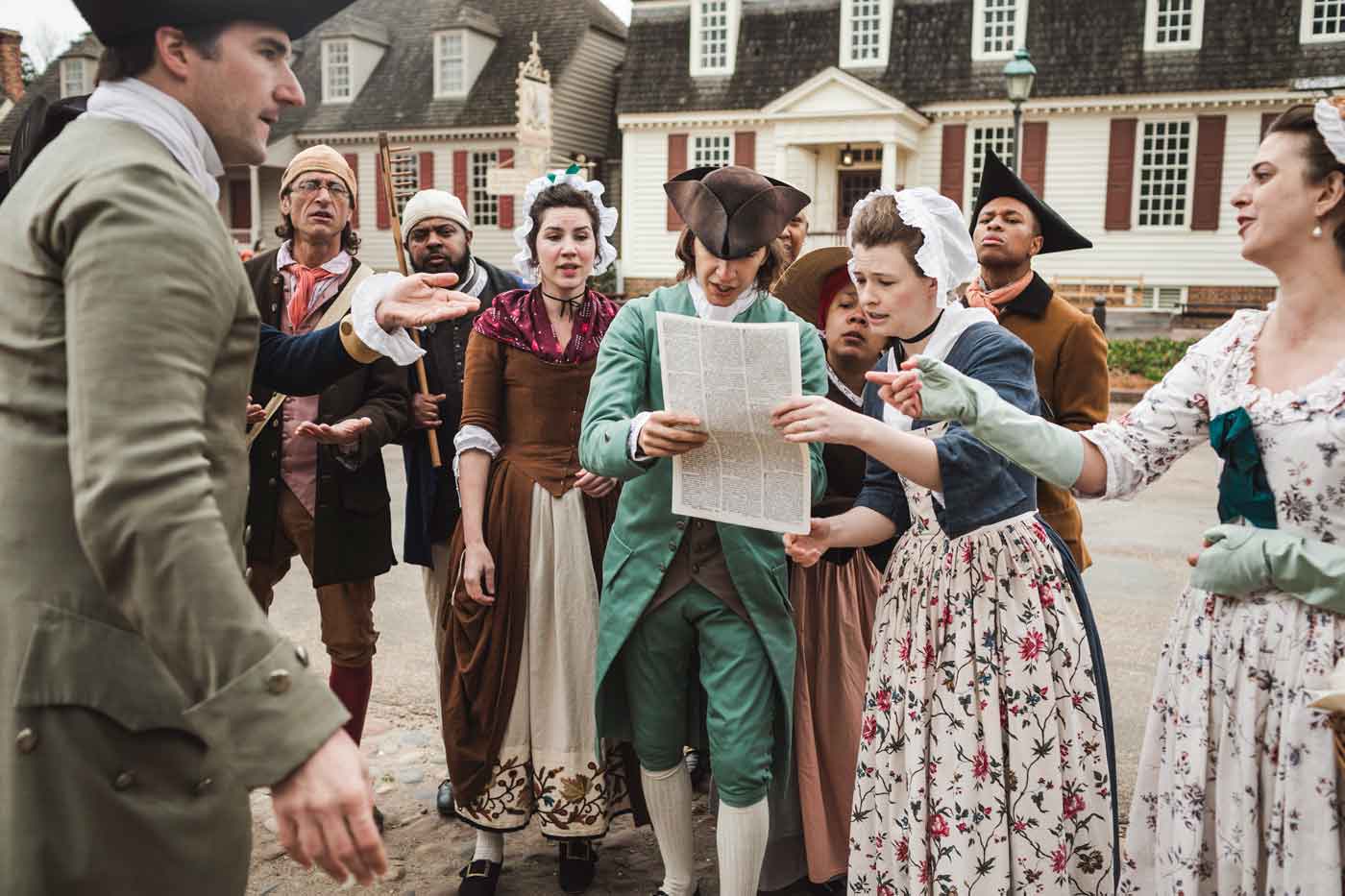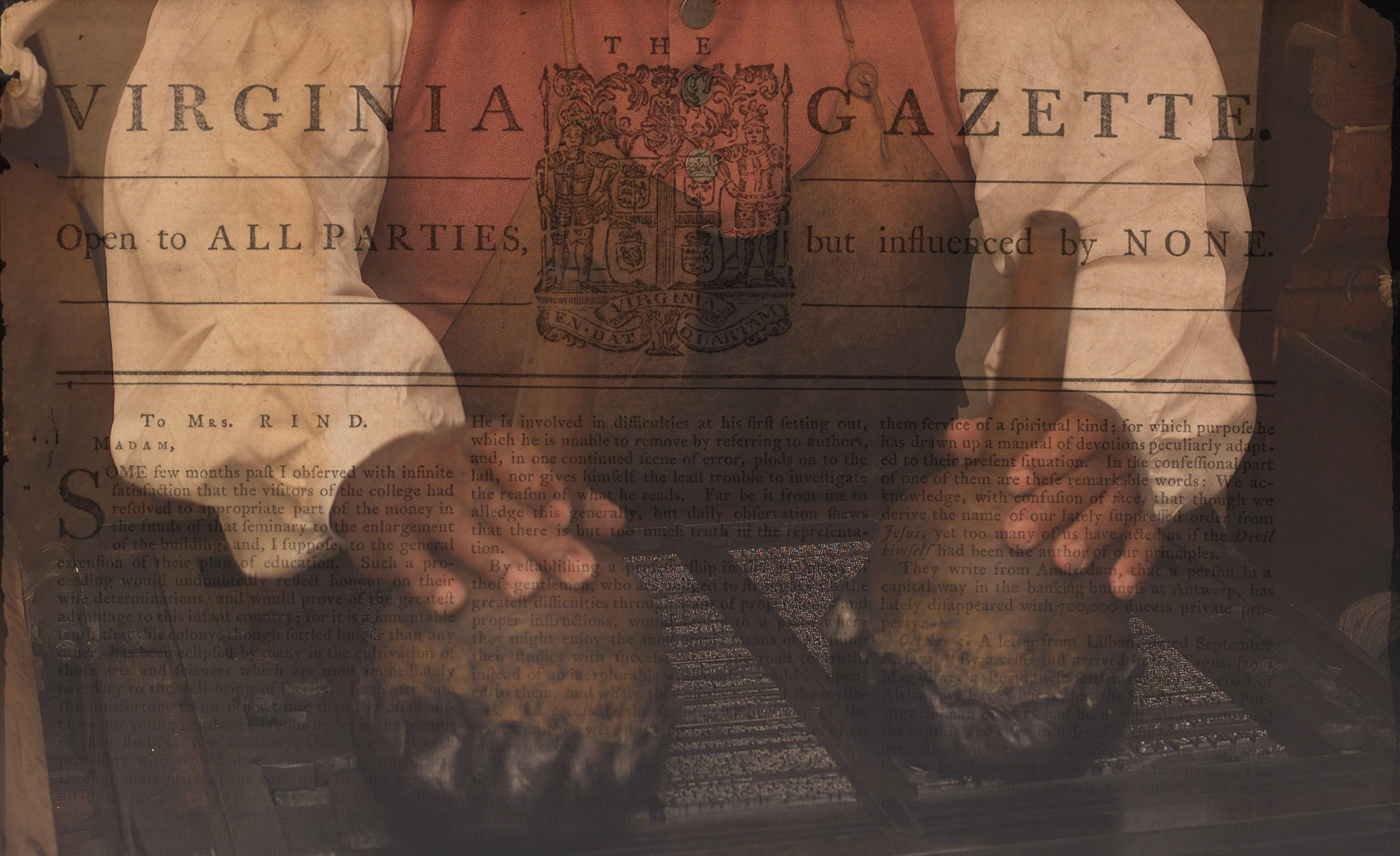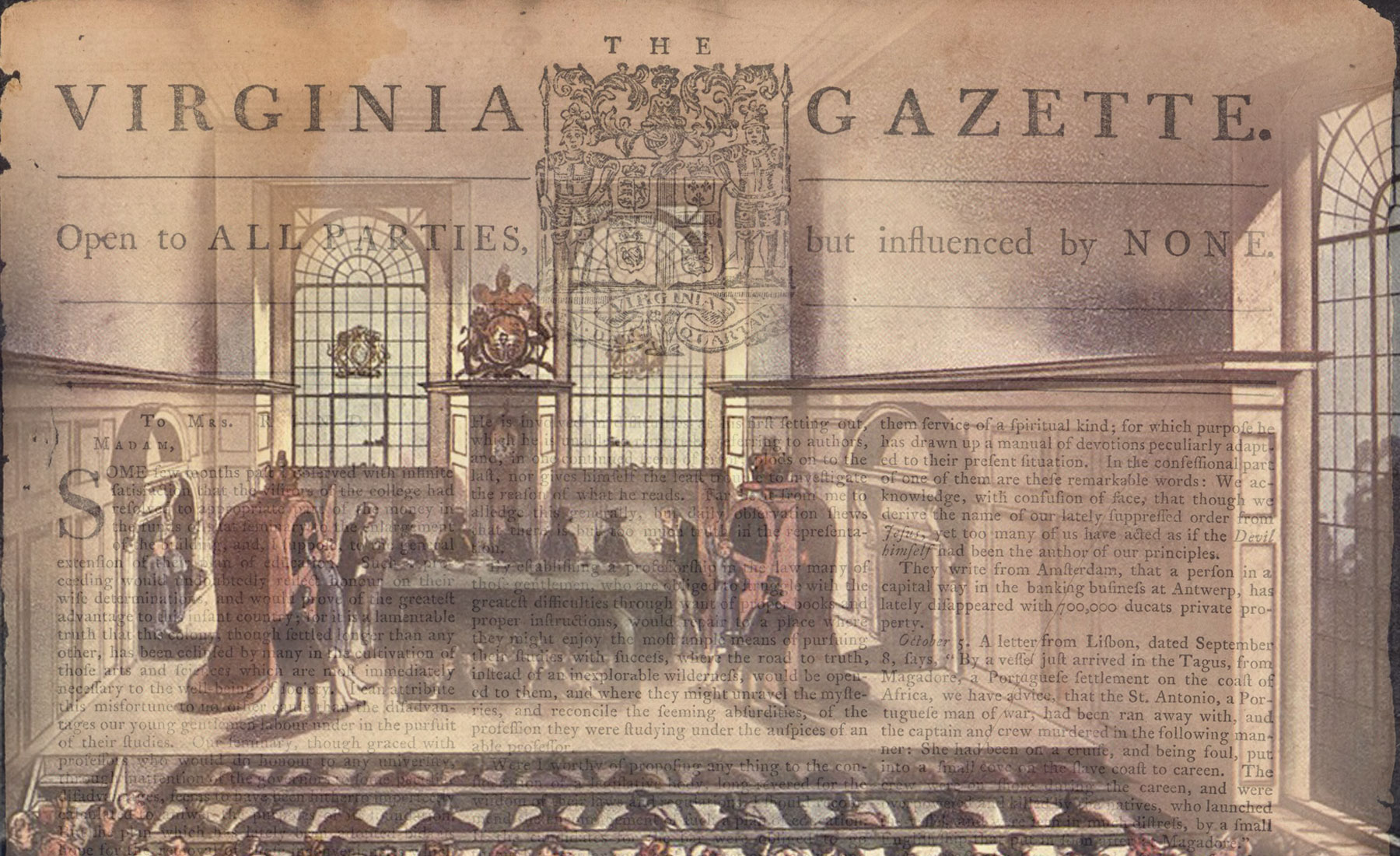Imagine someone scrolling through Facebook or TikTok two centuries from now. It’s hard to believe it would make much sense. Someday soon, the memes, the GIFs, and the dance crazes that sweep through social media will be relics of a forgotten age. Even the language we use will become difficult for non-specialists to parse. LOL? Lapsed, obscure, lost.
We encounter similar challenges today examining centuries-old issues of the Virginia Gazettes (available through Colonial Williamsburg’s John D. Rockefeller Jr. Library). To modern eyes, early American newspapers don’t make much sense. They lack most of the things you would expect to see from a news source. There are no articles, bylines, headlines, or thematic sections. But every medium has its rules. Below are our tips for reading the Virginia Gazettes like an eighteenth-century American would have read it.
To illustrate this, we will dissect a single issue of the Virginia Gazette published by John Dixon and William Hunter Jr. on December 6, 1776. As this issue went to press, the Revolutionary War was reaching a climax in New York City. Britain had dislodged the Continental Army and taken control of the city. George Washington was weeks away from leading his army across the Delaware to a surprise attack at Trenton. It was a low point for the revolutionaries, soon to be immortalized by Thomas Paine’s phrase, “These are the times that try men's souls.”
How did Virginians follow the news at this moment of uncertainty?
Tip 1. Sections are geographical, not topical.
Today, news grows stale after a day or two. But in the eighteenth century, newsgathering was a slow, patient process. It could take months for a newspaper to cross the Atlantic in a ship, or weeks for it to make its way through North America’s postal system. As a result, the Virginia Gazettes regularly featured months-old news from across the ocean alongside days-old news from nearby.
The result was a confusing tangle of timelines. The December 6 issue of Dixon and Hunter’s Virginia Gazette, for example, covered a range of events from July to December. Reading a newspaper in the eighteenth century was like peering into a powerful telescope—the farther away you looked, the further back in time you went.

To help readers sort out this mess, newspapers arranged reports into geographic sections, based on where the news had first been published. A header like “London, August 16,” for example, meant that the material in that section had first appeared in a London newspaper published in mid-August. The news in that section might have little to do with London. In this issue, for example, the London section contained information about some events in London, but also news from Barbados, Portugal, North America, and elsewhere.
Newspapers organized these sections so that the most distant sections appeared first, and local or nearby news came later. Readers could start with the oldest news and move forward in time as they read. At a time when publishers expected readers to consume the entire newspaper from front to back, it was a logical way of organizing an otherwise chaotic collection of news.1
Tip 2. Look for paragraphs, not stories.
The basic unit of news in the eighteenth century was the paragraph.2 Instead of self-contained news “stories” with headlines, context, and a narrative of events spread across several paragraphs, early newspapers crammed most reports into a single paragraph. Detailed accounts made for long paragraphs, which can be hard for modern eyes to read.

Paragraph breaks in news content of the Virginia Gazettes often (though not always) signaled a shift in topic. In this segment of the Philadelphia section, for example, four paragraphs discuss separate reports about the USS Independence capturing a British ship, a group of British transport boats leaving Connecticut, and the movements of a British army in New Jersey.
Hunter and Dixon of the Virginia Gazette had reprinted these from the local sections of the Pennsylvania Packet and Pennsylvania Evening Post published on November 263. The Williamsburg printers didn’t copy everything verbatim. Dixon and Hunter cut some items and reordered others. They also made some small errors, including changing the name of the ship captured by the Independence from Sam to Salem.

Tip 3. Don’t expect much local news.
There wasn’t much local news in eighteenth-century newspapers. Since the process of publishing and distributing a newspaper was so slow, local news traveled more quickly by word of mouth than it could in a weekly newspaper. This was especially the case in a small community like Williamsburg. But that suited many readers, who were most interested in reading about faraway events.

Consider this local section of the Virginia Gazette. It contains two short paragraphs about Virginia political affairs, including the news that Edmund Randolph had been chosen as mayor of Williamsburg. Between these is a long paragraph summarizing a British newspaper’s report about military operations six months ago. News like this sometimes appeared in local sections when it arrived late or when the printer couldn’t squeeze it in elsewhere.
It seems odd for this piece of old news, which was not especially important, to be given more room than the local election results. Indeed, it this can be frustrating for those of us who would prefer to see more detail about local events. But most of the Gazette’s readers didn’t need such details. They would have already heard them by the time they got their paper.
Tip 4. Watch out for the long “s.”

Modern readers of eighteenth-century print are often perplexed to find so many random “f”s everywhere. In fact, though, these are not “f”s, but an archaic form of the letter “s” often known as the long “s.” Printers used the familiar rounded “S” for capital letters and a rounded lower-case “s” when it came at the end of a word. In all other cases, the letter “s” was represented with an elongated symbol that resembles a lower-case “f” with the right half of its cross missing. When italicized, as in the motto of this issue of the Virginia Gazette, the long “s” appeared without a cross.
Still confused? It’s easier with visuals. In the below video, some of Colonial Williamsburg’s printers explain the long “S”:
5. Advertisements have the gossip.
Advertisements made up more than half of the Dec. 6, 1776, issue of Dixon and Hunter’s Virginia Gazette. Read carefully, they can tell us a great deal about the economic and social life of early America.


Some advertisements tried to sell something, such as land. Others identified needs, as Alexander Love did when he advertised, “I want a Quantity of Barley.”



Many advertisements had no commercial purpose. The above advertisements document William Dawson’s departure for the continental army, Richard Bland’s attempt to settle his father’s estate, and Stephen West’s accusation that John Golat stole his horse. At times, the advertisements feel like a gossip section.

Many advertisements supported the slave economy. In the Dec. 6, 1776, issue, six advertisements offered to buy, sell, or rent enslaved people. Thousands of advertisements in the Virginia Gazettes also sought to recover self-emancipated enslaved people. These advertisements are remarkably rich resources for trying to understand the enslaved people and slave trade of early Virginia.

Tip 6. Instant, Ultimo, and Proximo

This statement from the Continental Congress included the following introductory line: “Intelligence received by Congress, concerning the reduction of Mount Washington by the enemy on the 16th instant.” The final word, “instant,” often abbreviated at “inst.,” was a piece of shorthand often used in newspapers, letters, government documents, and commercial records. It was a way of saying “this month,” derived from the Latin instante mense. Likewise, a reference to “the 16th ult.,” from ultimo mense, would refer to the 16th day of the previous month. “Prox.,” from proximo mense, meant “next month.”
Tip 7. Don’t expect journalism.
The Virginia Gazette of December 6, 1776, shared news from Philadelphia indicating that there were “three reports in town concerning General [John] Burgoyne,” who was a British officer in the Revolutionary War. One report said he had been shot, one that he had died of a fever, and another that he had left for England. In the Baltimore section, another report by way of Philadelphia offered a fourth possibility: that Burgoyne had died in Quebec.


None of these reports was true. But eighteenth-century newspapers passed along unverified reports constantly. That was what they were for. Printers rarely vouched for the accuracy of a news report. In turn, readers accepted that not everything in a newspaper was true.
While many features of eighteenth-century newspapers may seem unrecognizable to us, this one is probably familiar to many social media users today.
Learn More
Sources
- Charles E. Clark, The Public Prints: The Newspaper in Anglo-American Culture, 1665–1740 (New York: Oxford University Press, 1994), 85.
- Will Slauter, “The Paragraph as Information Technology: How News Traveled in the Eighteenth-Century Atlantic World,” Annales 67, no. 2 (June 2012): 253–78.
- Pennsylvania Packet, Nov. 26, 1776; Pennsylvania Evening Post, N



